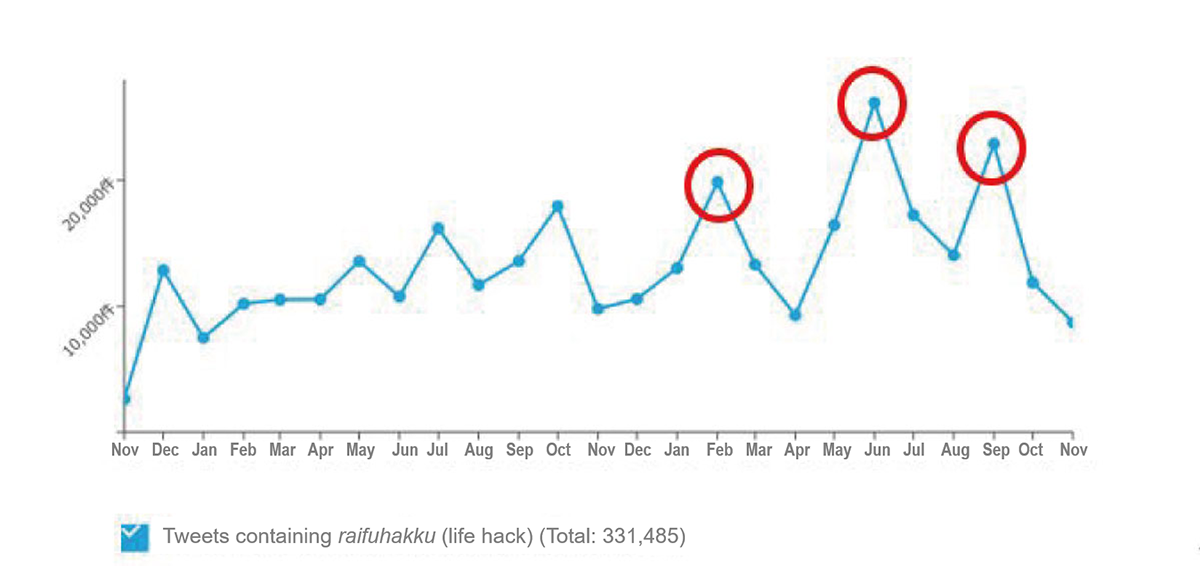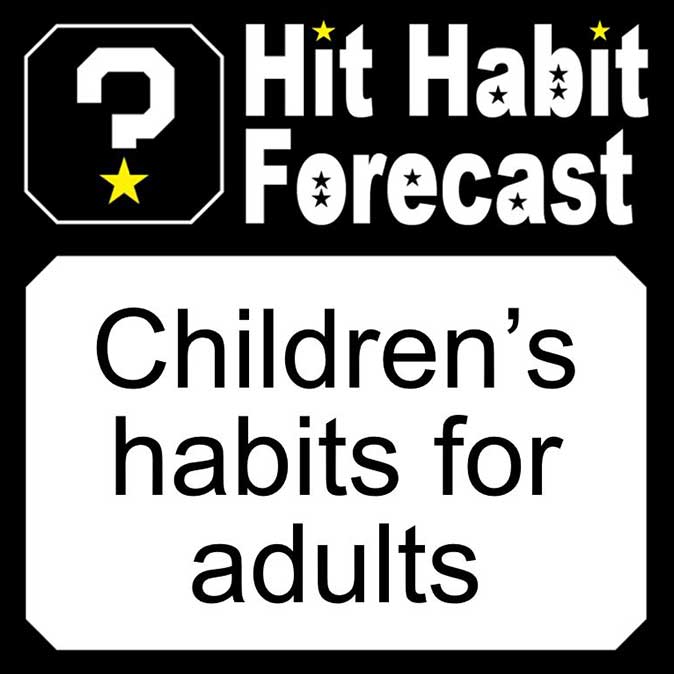- Viewpoints
Hit Habit Forecast is a regular column of the Hit Habit Makers, a group of young planners at Hakuhodo HQ that gamely stood up to say they were going to create hit habits—not hit products—as consumption shifts from purchasing things to purchasing experiences. Analyzing social media accounts and purchasing data of highly sophisticated users and conducting analysis on popular articles, etc. in a variety of media that have their fingers on the pulse of social trends: this is the bold, new challenge of forecasting hit habits that are about to break.

Hello. I’m Daichi Nagai of the Hit Habit Makers.
I joined the Hit Habit Makers this fiscal year and this is my very first column. A marketing staffer in my third year at the company, I transferred from Hokkaido to Tokyo earlier this year. I look forward to bringing you habit forecasts as a new face with a background unlike the original Hit Habit Makers members.
The topic today is “Templalife.”
A portmanteau of “template” and “life,” templalife is a kind of life hack where people “templatize” their lives to save time and improve efficiency. Such people have been growing in number recently. The term “life hack,” too, has been popularized, and you now often see it in book stores and on YouTube, etc. If you look at Twitter post trends, you will also see that it has been attracting increased attention in recent times.
 Source: Insight Intelligence
Source: Insight Intelligence
I, myself, always wear the same clothes and eat the same meals, and when I asked around, I learned that a lot of people are the same. In this edition, I want to show the kinds of templalife habits that people are implementing.
First, the templatizing of what we wear.
“Business minimalism” is something that Steve Jobs famously implemented, but this trend seems to have gone beyond the business realm and into private lives as well. As evidenced by the term “normcore” (ultra-normal), we’ve been seeing people on the streets in white t-shirts and black pants for a while now, but it feels like the absolute number of people in this garb has been increasing lately. Among the people around me, I noticed that a friend who used to dress up in her personal time even though she dressed conservatively in a black or navy jacket, pants and pumps when she came to work, suddenly only wears the same thing all the time. When I asked her about it, she said: “Since COVID-19, I hardly ever meet business partners face to face, so I now just wear a muted cardigan to work, the same as I would wear to go out in my personal time.” The blurring of boundaries between public and private and reduced opportunities to meet people in the real world that have occurred due to the pandemic seem to have spurred the templatization trend.
Next, the templatization of what we eat.
This means eating basically the same things for breakfast and lunch every day. It’s something I do myself, too. The reason for eating the same thing over and over, like wearing the same thing every day, is that it’s easy and saves time thinking about what to eat. When I asked a friend who does this, he said, “I started doing it because it’s easier somehow, but now it’s become internalized and gives me comfort. Making it a routine, gives me inner peace.” Templatizing not just what they wear but also what they eat seems to create a touchstone that helps people stick to the rhythms of their lives.
Finally, let’s look at the templatization of communication.
While I was looking on social media for people who templatize other aspects of their lives in preparation for writing this article, I came across someone who has entered lots of set phrases in the autofill function of their smartphone. One scene for which they have set these phrases is trading on flea market apps. For instance, “I will send it shortly, and appreciate your patience” and “No neurotic types, please.” As opportunities for individuals to interact with countless strangers increase incrementally with the normalization of social media and flea market apps, the trend toward templatizing even communications appears to be getting stronger. Certainly, the potential for trouble is always there when money and goods change hands, so it’s natural to want to communicate in language that’s as inoffensive as possible.

Something else interesting in a similar example was messages within matchmaking apps. I identified someone who was templatizing their messages while also using killer words that showed originality. I think matchmaking apps are an extremely efficient way to find a partner, but I’m not so sure about seeking efficiency to the point of templatizing messages. Then again, looking at it with fresh eyes, I kind of get it, because in a red ocean market, if you don’t differentiate yourself with the very first message, you’re going to miss your opportunity and not even get to the batter’s box.
Now that we’ve looked at a few examples of templalife, what is causing the trend to accelerate today?
One reason would be that due to the pandemic, it’s become much clearer to sei-katsu-sha—the term Hakuhodo uses in place of “consumers” to mean real people with their own lifestyles, aspirations, and dreams—what they need. As work styles and activity times become more complex and blurred, tasks like household chores, work and childcare are occurring simultaneously, and we now need to prioritize it all.
Another reason may be that as people spend more time in self-reflection, they are reviewing their lives and thinking about ways to minimize labor and time and create comfort, and this has led them to start exploring coping mechanisms. This, I think, is continuing to expand—from people’s professional lives to their private lives, and from food and clothing to communication.
Lastly, I thought a bit about business opportunities offered by templalife.
Examples of templalife business opportunities
■ Developing an app that recommends life hacks that manage tasks and increase efficiency
■ Lifestyle consulting that suggests templates in line with individual tastes and concerns
■ Developing bots that communicate online on people’s behalf, using the ways they speak and their pet phrases
As I, myself, continue to work remotely, my activity times and touchstones are getting more blurred by the day. I will continue to explore templatization, updating my habits as I go, as I strive to improve the efficiency of my everyday work.

Integrated Planning & Creative Division
Hakuhodo Inc. / Hokkaido Hakuhodo Inc.
















